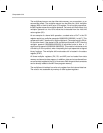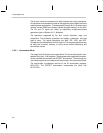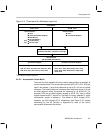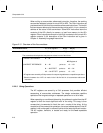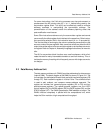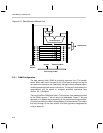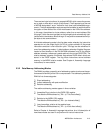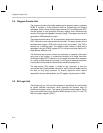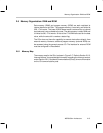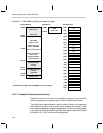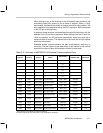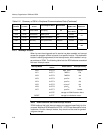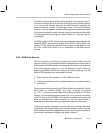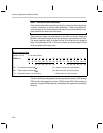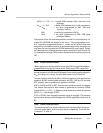
Program Counter Unit
2-14
2.4 Program Counter Unit
The program counter unit provides addressing for program memory (onboard
ROM). It includes a 16-bit arithmetic block for incrementing and loading
addresses. It also consists of the program counter (PC), the data pointer (DP),
a buffer register, a code protection write-only register, and a hardware loop
counter (for strings and repeated-instruction loops). The program counter unit
generates a ROM address as output.
The program counter value, PC, is automatically saved to the stack on various
CALL instructions and interrupt service branches. The stack consists of one
hardware-level register (TOS) which points to the top-of-stack. The TOS is
followed by a software stack. The software stack resides in RAM and is
addressed using the STACK register (R7) in indirect mode (see Section 2.3,
Data Memory Address Unit).
The hardware loop counter controls the execution of repeated instructions
using one of two modes: 1) consecutive iterations of a single instruction
following the repeat (RPT) instruction, or 2) a single instruction which operates
on a string of data values (string loops). For all types of repeated execution,
interrupt service branches are automatically disabled (temporarily).
The data pointer (DP) register is loaded at two instances: 1) from the
accumulator during lookup-table instructions, and 2) from the databus during
the fetch of long string constants. To simplify algorithms which require
sequential indices to lookup tables, the DP register may be stored in RAM.
2.5 Bit Logic Unit
The bit logic unit is a 1-bit unit which operates on flag bit data. It is controllable
by eleven different instructions, which generate the decision flags for
conditional program control. The results of operations performed by the bit
logic unit are sent either to the flag bit of RAM memory or to the TF1 and TF2
bits of the status register (STAT).



